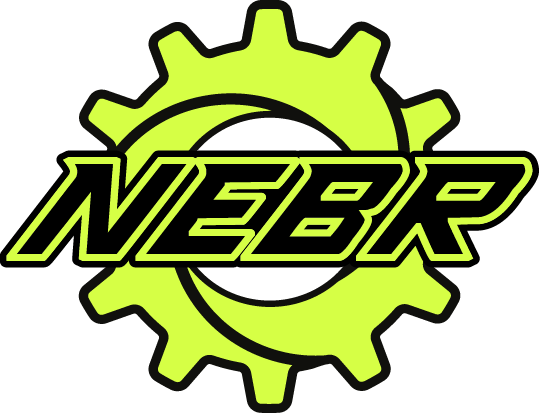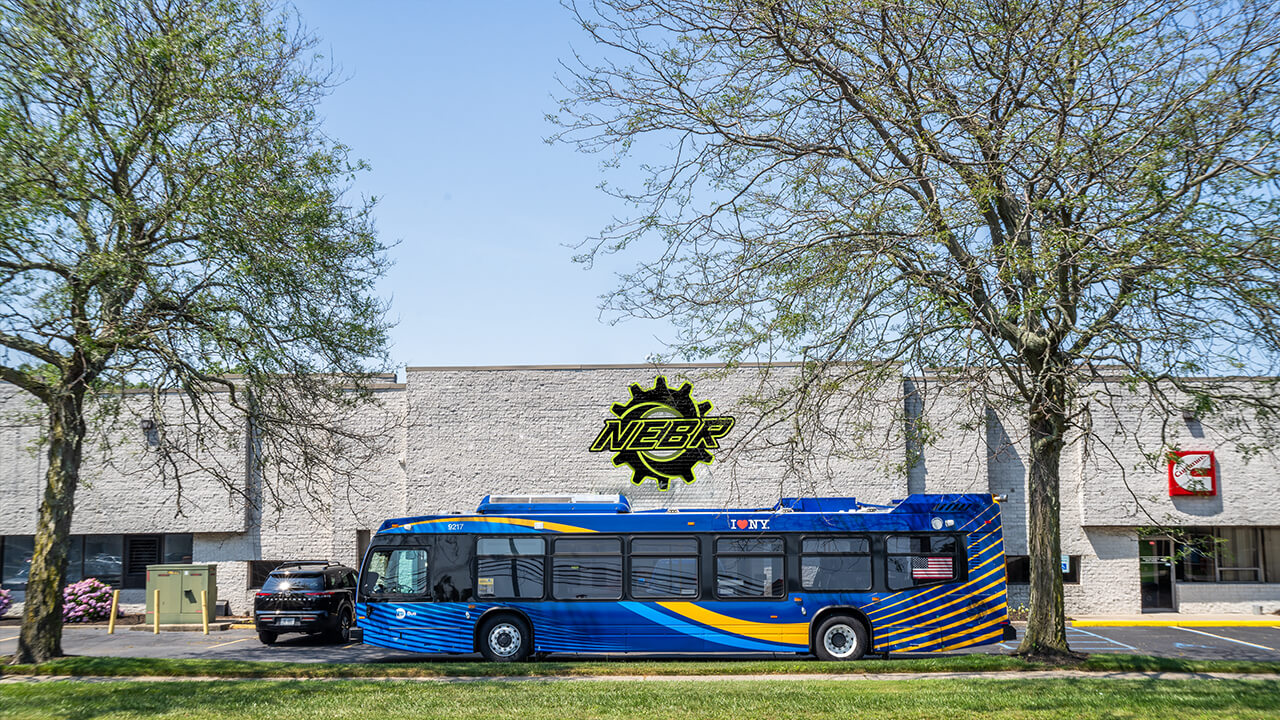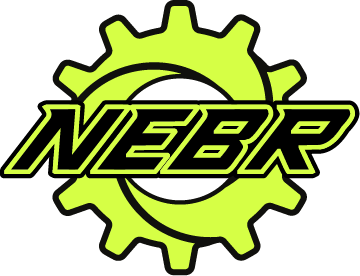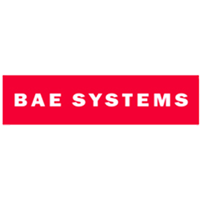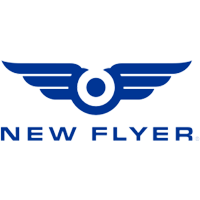Managing a bus fleet is like running a small city on wheels—it’s constantly in motion, with hundreds or even thousands of moving parts that need to work in harmony. From engines and brakes to HVAC systems and tires, every component plays a crucial role in keeping your fleet safe, reliable, and on schedule. Neglecting even one element can lead to cascading issues that impact passenger safety, route efficiency, and your bottom line.
That’s where seasonal bus maintenance from Northeastern Bus Rebuilders comes in. Unlike reactive repairs that occur after something breaks, seasonal maintenance is proactive. It involves inspecting, servicing, and adjusting your buses in preparation for changing weather conditions and operating demands. Whether it’s flushing radiators before a hot summer, checking battery performance before a harsh winter, or ensuring brakes and suspension are ready for spring roads, seasonal maintenance helps prevent minor issues from becoming costly emergencies.
The benefits are clear: properly maintained buses spend less time in the shop, more time on the road, and cost less to operate over their lifespan. Regular seasonal checkups can extend vehicle life by years, reduce emergency repair costs, and improve overall passenger safety and comfort. In addition, a well-maintained fleet gives drivers confidence in their equipment and helps fleet managers stay compliant with safety regulations, including DOT inspections.
Year-Round Overview of Seasonal Bus Maintenance
Effective seasonal bus maintenance isn’t just about reacting to weather—it’s about planning ahead for every stage of the year. Each season presents unique challenges that can impact vehicle performance, passenger safety, and fleet budgets. A proactive approach ensures buses remain reliable, compliant, and cost-efficient no matter the time of year.
By integrating seasonal preventive maintenance into your fleet management strategy, you can minimize unexpected breakdowns, reduce repair costs, and extend the operational life of each bus. Seasonal checklists and inspections help fleet managers stay ahead of weather-related challenges, ensure passenger comfort, and maintain regulatory compliance throughout the year.
Why Year-Round Seasonal Bus Maintenance Matters
Implementing a structured seasonal bus maintenance program is about more than just checking boxes—it’s a strategic investment in fleet longevity, safety, and financial efficiency. Here’s why it matters:
- Prevent Costly Breakdowns: Regular inspections and seasonal adjustments help catch small issues before they escalate into major repairs. For example, neglecting spring corrosion checks or winter tire rotations can quickly lead to expensive emergency repairs and extended downtime.
- Maximize Fleet Uptime: Every day a bus is out of service affects schedules, revenue, and passenger satisfaction. Proactive maintenance keeps your fleet moving reliably across all seasons, minimizing route disruptions and operational headaches.
- Enhance Safety and Compliance: Seasonal weather impacts vehicle systems—from brakes to heating to electrical components. Consistent maintenance ensures that buses remain safe for passengers and compliant with regulations, including state and DOT requirements.
- Extend Vehicle Lifespan: Buses are a significant investment. Regular seasonal maintenance protects that investment by reducing wear and tear caused by extreme temperatures, precipitation, and road conditions.
- Optimize Budgeting and Planning: Knowing what maintenance each season requires allows fleet managers to forecast costs, allocate funds efficiently, and avoid unexpected expenses. This creates a clear, predictable budget for repairs, parts, and labor throughout the year.
Spring Bus Maintenance Checklist
Spring is a time of renewal, and your buses need it too. After harsh winter weather, roads are often full of salt and debris, which can accelerate corrosion and damage undercarriages. A comprehensive spring maintenance routine ensures that your fleet is ready for long summer routes and heavy passenger loads.
Key Spring Maintenance Tasks:
- Inspect Brakes and Suspension: Winter roads can cause wear on brake pads, discs, and suspension components. Check for corrosion, cracks, or unusual wear patterns. Neglecting this can lead to brake failure or uneven wear later in the season.
- Fluid Check & Replacement: Inspect engine oil, coolant, transmission, and hydraulic fluids. Winter may have depleted or contaminated fluids, so refreshing them now prevents mid-season issues.
- Battery Inspection: Cold months can stress batteries. Test capacity and replace weak units to avoid roadside failures during peak service months.
- Exterior Cleaning & Rust Prevention: Wash off salt and debris, apply protective coatings, and inspect the undercarriage for corrosion. Preventive care at this stage is far cheaper than emergency rust repairs later.
Spring is also the ideal time to implement the preventive maintenance services every fleet needs to start the season with reliable vehicles.
We once managed a fleet where a bus developed corrosion on the brake lines over winter. Catching it during spring maintenance prevented a potential in-service brake failure—a small inspection that saved thousands in emergency repairs.
Summer Heat Preparation for Bus Fleets
Summer brings high temperatures, longer days, and increased passenger loads. Heat can accelerate wear on engines, tires, and HVAC systems, and fleet managers must prepare for these seasonal stresses. Neglecting to inspect cooling systems, monitor fluid levels, and service air conditioning units during the summer months can quickly lead to overheating, reduced efficiency, and costly in-service breakdowns.
Summer Maintenance Tasks:
- Cooling System Check: Radiators, hoses, and coolant levels must be inspected. Overheating can cause engine failure, especially during summer peaks.
- Air Conditioning Systems: Ensure HVAC systems are fully operational to keep passengers comfortable and prevent complaints. Summer heat can also reduce engine efficiency if cooling systems are compromised.
- Fluid Levels & Oil Changes: High temperatures degrade engine oil faster. Adjust maintenance schedules accordingly.
- Tire Inspection: Heat increases tire pressure and wear, so check tread depth, inflation, and alignment. Overheated or underinflated tires can lead to blowouts or uneven wear, especially in urban stop-and-go traffic.
Fall Bus Maintenance: Preparing for Winter
Fall maintenance bridges the gap between the hot summer months and the cold winter season. Fall inspections allow fleet managers to identify wear caused by summer heat, address potential issues before freezing temperatures arrive, and ensure that every bus is ready for winter’s increased demands.
Fall Maintenance Tasks:
- Battery and Charging System Check: Batteries weaken in colder temperatures, so ensure each unit can handle winter demands.
- Heating System Inspection: Test heaters to ensure passenger comfort and prevent windshield defrosting issues.
- Brake System Review: Cooler weather can affect brake performance. Look for wear, corrosion, and fluid integrity.
- Exterior & Lighting Check: Shorter days require fully functioning lights and reflective markers.
Fall is also a good time to review seasonal bus maintenance logs from previous years, identify recurring problems, and implement targeted solutions before the first snow falls.
Pro Tip: Conduct a “winter readiness” drill with a small number of buses to identify issues that could impact service, such as heater failures or frozen door mechanisms.
Winter Bus Maintenance Essentials
Winter is arguably the most demanding season for buses. Cold temperatures, ice, and snow create challenging conditions that can compromise both safety and vehicle performance. Engines may struggle to start, batteries can lose capacity, and fluids can thicken or freeze if not properly maintained. Snow and ice increase the risk of slips and accidents, putting extra strain on brakes, tires, and suspension systems. Additionally, heaters and defrosting systems must work efficiently to ensure passenger comfort and driver visibility, while road salt and chemicals can accelerate corrosion on undercarriages and critical components.
Without proper seasonal bus maintenance in the winter, minor issues can quickly escalate into costly repairs or unexpected downtime, disrupting service schedules and creating safety hazards. Cold weather requires special attention to diesel engine maintenance tips for optimal performance.
Critical Winter Tasks:
- Diesel Engine Maintenance: Cold weather places extra strain on diesel engines. Following diesel engine maintenance tips ensures engines start reliably and operate efficiently during freezing temperatures.
- Anti-Freeze & Coolant Systems: Check mixture levels to prevent engine freezing. Consider using winter-grade coolant for extreme cold regions.
- Heating & Defrosting Systems: Proper function is vital for driver visibility and passenger comfort.
- Winter Tire Installation: Switch to winter-rated tires or chains in regions with heavy snowfall.
Seasonal HVAC Maintenance for Buses
Regardless of the season, HVAC systems are critical for passenger comfort and operational efficiency. Seasonal inspections prevent costly breakdowns:
- Air Filters: Replace or clean seasonally to ensure airflow and prevent system strain.
- Refrigerant Levels: Low refrigerant reduces cooling efficiency during summer heat waves.
- Heater Core & Fans: Test functionality in fall and winter for proper heat distribution.
Proper HVAC care reduces strain on the engine and prevents costly in-service breakdowns—a hidden cost many fleet managers overlook.
Weather-Related Bus Repair Prevention
Weather changes create opportunities for unexpected repairs, from flooded engine compartments to frozen brake lines. Preventive checks can mitigate these risks:
- Inspect for water ingress in wheel wells and undercarriages.
- Lubricate door hinges, locks, and moving parts to prevent freezing or sticking.
- Seal electrical connectors and critical wiring against moisture intrusion.
Seasonal changes make spotting early warning signs even more critical for fleet safety and cost control.
Tip: Schedule pre-storm inspections for buses operating in regions with heavy rainfall or snow to reduce emergency breakdowns.
Despite the best preventive measures, weather-related emergencies can still occur. Having a comprehensive emergency bus repair preparedness plan ensures your fleet can respond quickly when severe weather causes unexpected breakdowns. This includes pre-arranged emergency service contracts, backup transportation plans, and clear protocols for weather-related mechanical failures.
Seasonal Tire and Brake Maintenance
Tires and brakes are directly affected by seasonal conditions. Neglecting them can lead to increased wear, safety hazards, and higher repair costs.
- Tire Pressure Checks: Temperature fluctuations affect pressure; incorrect inflation leads to premature wear.
- Tread Depth Inspection: Adequate tread prevents hydroplaning in rain or slipping on ice in winter.
- Brake Inspection: Moisture and road salt can cause corrosion. Ensure rotors, pads, and calipers are fully operational.
Rotating tires seasonally can also extend lifespan, while adjusting brake inspections for winter conditions prevents costly emergency repairs.
Year-Round Seasonal Maintenance Planning
Final Thoughts
A proactive maintenance schedule is essential for keeping your fleet prepared for every season, ensuring buses remain safe, reliable, and cost-efficient throughout the year. Year-round planning goes beyond simply reacting to problems as they arise—it involves anticipating seasonal challenges and implementing preventive measures in advance, including:
- Maintaining detailed logs for each vehicle.
- Scheduling inspections ahead of seasonal changes.
- Coordinating with professional service providers for comprehensive coverage.
Successful seasonal maintenance planning requires accurate financial forecasting and strategic budget allocation. Fleet managers who excel at budgeting for seasonal repairs can allocate resources more effectively, take advantage of off-season pricing, and avoid the premium costs associated with emergency repairs during peak operating periods.
Quick Compliance Tip: Fleet managers should also check regulations from the Department of Transportation to ensure seasonal inspections meet state safety requirements.
Seasonal bus maintenance is more than just a checklist—it’s a strategy to maximize fleet reliability, protect passengers, and control costs. From spring inspections to winter readiness, each season has unique challenges that require careful attention. NEBR offers trusted bus repair and maintenance services to support your year-round fleet needs.
Think of seasonal bus maintenance as an insurance policy you actively manage. By investing time and resources into preventive care, you minimize surprises, maximize uptime, and protect the significant investment that each bus represents. Over the course of a year, a disciplined seasonal maintenance program can save thousands of dollars, reduce stress for your operations team, and keep your fleet running efficiently through every season.
By implementing a proactive seasonal bus maintenance plan, fleet managers can:
- Reduce unexpected breakdowns
- Extend the lifespan of buses
- Lower overall maintenance costs
- Maintain safety and compliance year-round
Remember, investing a few hours in seasonal inspections today can save thousands in emergency repairs tomorrow. Contact our comprehensive fleet services team to learn more about expert guidance for your fleet’s seasonal maintenance.
